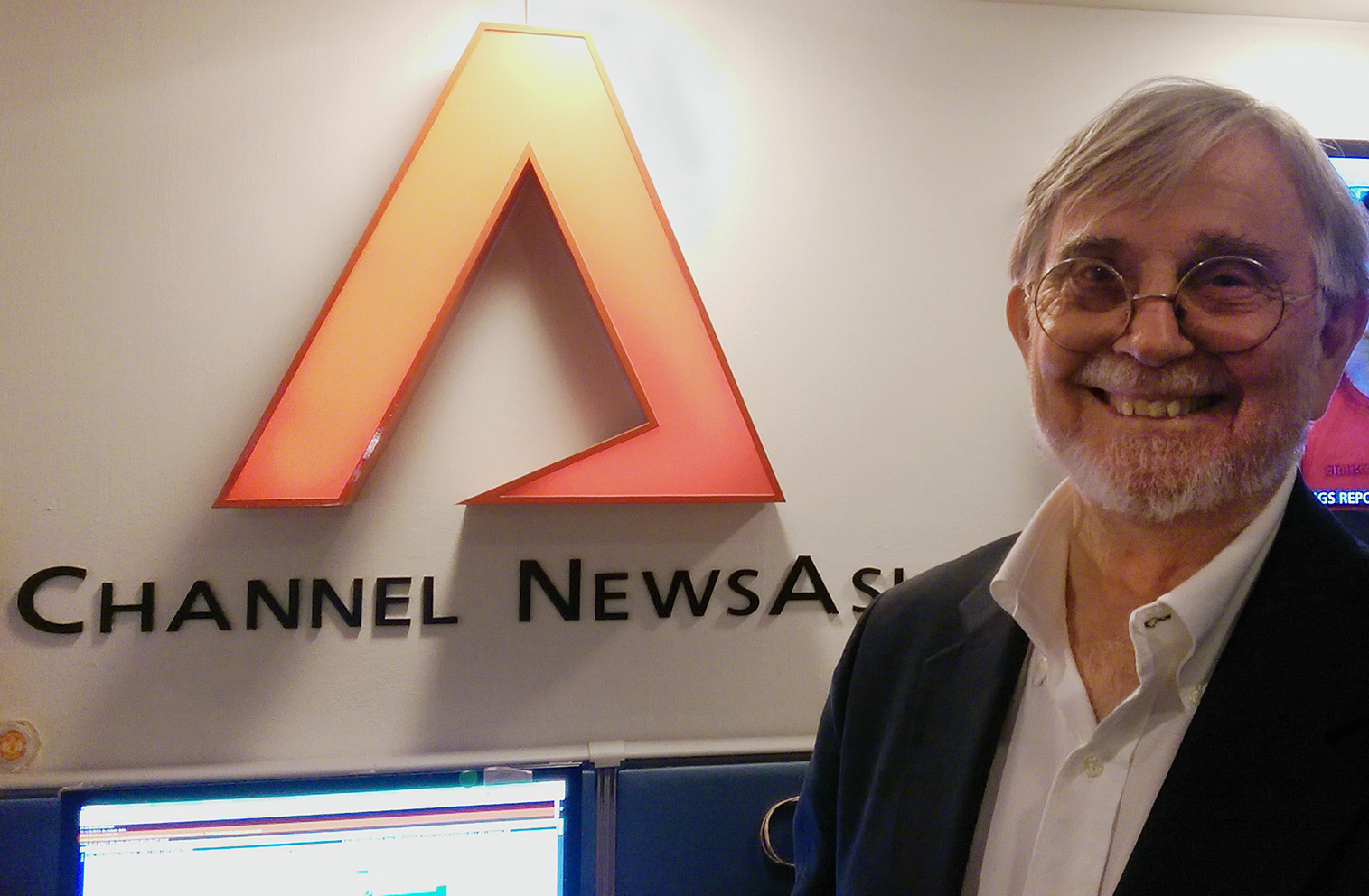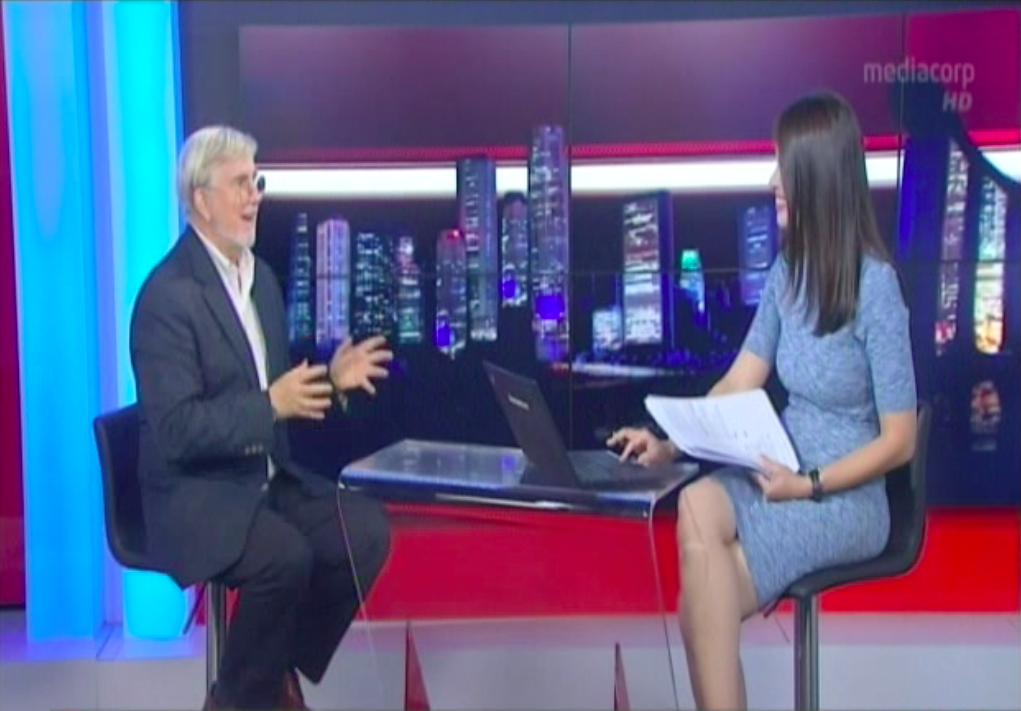Prof Paul Tapponnier talks about the MIRAGE expedition and its earthquake study on Channel NewsAsia
Tectonics Group Leader of the Earth Observatory of Singapore (EOS), Professor Paul Tapponnier, made an appearance on Channel NewsAsia last Friday on 1 July 2016.

Interviewed live in the studio for MediaCorp’s nightly news programme, Singapore Tonight, Prof Tapponnier talked about the MIRAGE expedition that had set sail for the Wharton Basin in the Indian Ocean exactly one week ago.
When asked by TV host, Ms Dawn Tan, why the Indian Ocean was chosen for this expedition, Prof Tapponnier said, “Quite simply, the earthquake in 2012 was the biggest earthquake ever recorded inside an oceanic plate.” It measured 8.6 on the Richter Scale.
He went on to explain that oceanic plates are usually pretty stable. “In fact, the oceanic lithosphere (the outer layer on which oceans are installed) is very rigid. It is the reason why plate tectonics work on earth,” he said.
“You have big plates and the plates move, but inside the oceanic plates, nothing much happens. And this huge earthquake suddenly occurred. It startled everybody. And so we want to understand how this happened. We want to better map the fault that is responsible for that earthquake.”
Prof Tapponnier added that scientists already know, from seismic studies, that the rupture occurred about 50 km deep inside the plate, which is very unusual.
“We may be witnessing in this area the birth of a new plate boundary,” he said, “which is an exciting thing because that doesn’t happen very often.”
He then explained that the MIRAGE expedition was going to map, in great detail, the topography of the sea floor. “We hope to see cracks (some of them very fresh), fault lines, deformed sediments, and we hope to be able to tell whether the deformation zone is localised to a narrow area or not.
“Up to now, the belief is that there is diffused activity all over this place. We understand that Australia and India are ‘not happy’ to move together. But we don’t really understand how this works. 
“If we found that this deformation is quite localised, we could say, ‘Hey, this is a new plate boundary. It is trying to propagate south and west.’”
So how would all of this play into the larger framework of understanding earthquakes, Dawn asked.
“Well, first of all, if this were a new developing tectonic plate, we could argue that other very large earthquakes are bound to occur in this general area,” Prof Tapponnier said.
“Now, the earthquake of 2012 did not cause damage anywhere else. It was far away in the ocean. This is mostly interesting from a theoretical point-of-view. There are other parts of Southeast Asia that are much more dangerous.
“The expedition of last year, for instance, was targeting the Sumatran subduction zone. We have fantastic results, like a map of the morphology and topography of the ocean right at the subduction zone where we expect a large earthquake, one that is perhaps comparable to the one in 2004 which led to the creation of EOS where I work. This might happen in the next, I don’t know, 10 to 30 years.
“So that was a different expedition. We are still processing the data. This one is connected, but not exactly the same. Many people think that the earthquake in 2012, which was a very large one in the ocean, may be a consequence of other earthquakes that have struck the Sumatran subduction zone in the years before.”
Before the interview ended, Prof Tapponnier marveled at how there has been an incredible amount of large earthquakes in this part of the world. “2004, 2005, 2008 (two of them), other smaller ones but with quite big tsunamis, and 2010, just to name a few,” he said. “So this region is alive.”